Vue d'ensemble Bandes de carbure rectifiées
Les bandes de carbure de finition sont un élément essentiel de diverses applications industrielles, réputées pour leur durabilité, leur dureté et leur résistance à l'usure. Ces bandes sont principalement utilisées dans les opérations de coupe, d'usinage et d'abrasion, offrant de hautes performances et une grande longévité. Elles sont donc très recherchées dans des secteurs tels que l'automobile, l'aérospatiale et l'industrie manufacturière.
Dans cet article, nous allons nous plonger dans le monde des bandes de carbure de finition, en explorant leurs types, leurs applications, les propriétés des matériaux et la manière de choisir le bon fabricant. Nous comparerons également différents modèles de poudres métalliques et fournirons des tableaux détaillés pour faciliter les références.
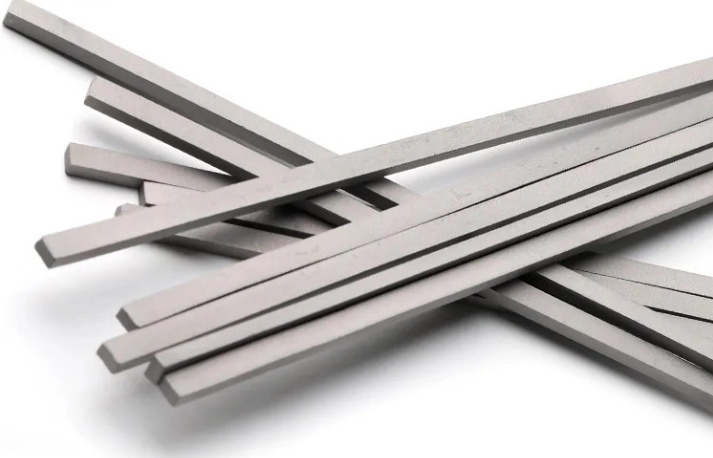
Types de bandes de carbure rectifiées
Différents types de bandes de carbure rectifiées sont disponibles, chacun étant conçu pour des applications et des exigences de performance spécifiques. Voici un tableau détaillé résumant les types de bandes de carbure rectifiées :
| Type | Description |
|---|---|
| Bandes en carbure massif | Entièrement fabriquées en carbure de tungstène, ces bandes offrent une dureté et une résistance à l'usure maximales. |
| Bandes liées au cobalt | Dotées d'un liant en cobalt, ces bandes offrent une ténacité et une résistance aux chocs accrues. |
| Bandes liées au nickel | Utilisant le nickel comme liant, ces bandes sont connues pour leur excellente résistance à la corrosion. |
| Bandes de carbure de titane | Combinaison de titane et de carbure pour une meilleure stabilité à haute température et une meilleure résistance à l'usure. |
| Bandes multicouches | Composé de plusieurs couches de différentes compositions de carbure afin d'optimiser les performances dans des conditions variées. |
| Bandes de carbure à micro-grain | Ces bandes ont une structure à grain fin, offrant une rétention d'arête et un tranchant supérieurs. |
| Bandes de carbure revêtues | Comporte un revêtement tel que TiN ou TiC pour améliorer la dureté de la surface et réduire le frottement. |
| Bandes de carbure renforcées | Conçu avec des renforts supplémentaires pour les applications nécessitant une durabilité extrême. |
| Bandes personnalisées | Adaptés aux besoins spécifiques des clients pour des applications uniques. |
Applications de la Bandes de carbure rectifiées
Les bandes de carbure de finition sont utilisées dans un grand nombre d'industries. Voici un tableau complet des applications :
| Application | Description |
|---|---|
| Outils de coupe | Utilisé dans la fabrication de lames de scie, de fraises et de forets. |
| Usinage | Essentiel dans les opérations d'usinage de précision pour les matériaux métalliques et non métalliques. |
| Outils abrasifs | Employé dans les meules et autres outils abrasifs pour l'enlèvement de matière. |
| Travail du bois | Utilisé dans les outils de coupe, de façonnage et de finition des produits en bois. |
| Exploitation minière et construction | Composant clé des outils et des machines pour les activités d'exploitation minière, de forage et de construction. |
| Automobile | Ils font partie intégrante de la fabrication des composants automobiles, garantissant une grande précision et une grande durabilité. |
| Aérospatiale | Essentiel pour la production de pièces aérospatiales qui exigent une solidité et une résistance à l'usure exceptionnelles. |
| Instruments médicaux | Utilisé dans la création d'outils de coupe et de dispositifs médicaux qui nécessitent des opérations précises et stériles. |
| Formage des métaux | Appliqué aux outils pour l'emboutissage, le pliage et le formage des métaux. |
| Composants électroniques | Indispensable dans la production de pièces électroniques nécessitant une grande précision et une résistance à l'usure. |
Propriétés des matériaux des bandes de carbure rectifiées
Il est essentiel de comprendre les propriétés des bandes de carbure rectifiées pour sélectionner le bon type de bande pour des applications spécifiques. Le tableau ci-dessous présente ces propriétés :
| Propriété | Description |
|---|---|
| Dureté | Mesure la capacité à résister à la déformation et à l'usure. |
| Solidité | Indique la capacité du matériau à absorber l'énergie et à résister aux fractures. |
| Résistance à l'usure | Définit la capacité du matériau à résister à l'usure de surface et à l'abrasion. |
| Résistance à la compression | La capacité à supporter des charges tendant à réduire la taille. |
| Conductivité thermique | La capacité à conduire la chaleur, importante pour les applications à haute température. |
| Résistance à la corrosion | Résistance à la détérioration chimique et à l'oxydation. |
| Densité | La masse par unité de volume, qui influence le poids et la stabilité des bandes. |
| Résistance à la rupture | Mesure la capacité du matériau à résister à la propagation des fissures. |
| Module de Young | Indique la rigidité du matériau. |
| Coefficient de dilatation thermique | La vitesse à laquelle le matériau se dilate en fonction des changements de température. |
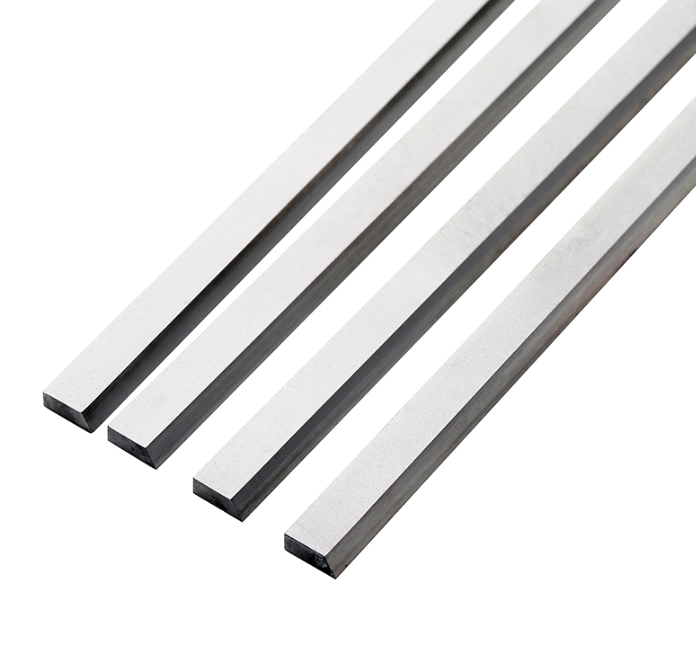

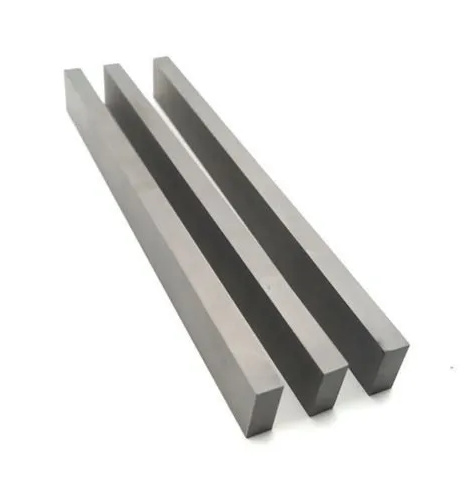
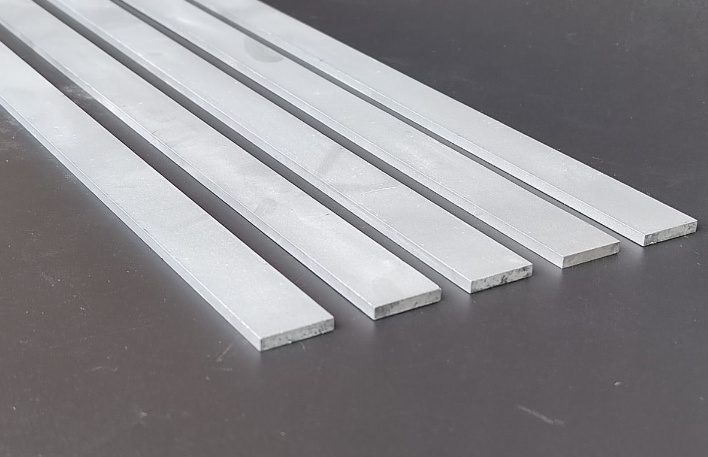
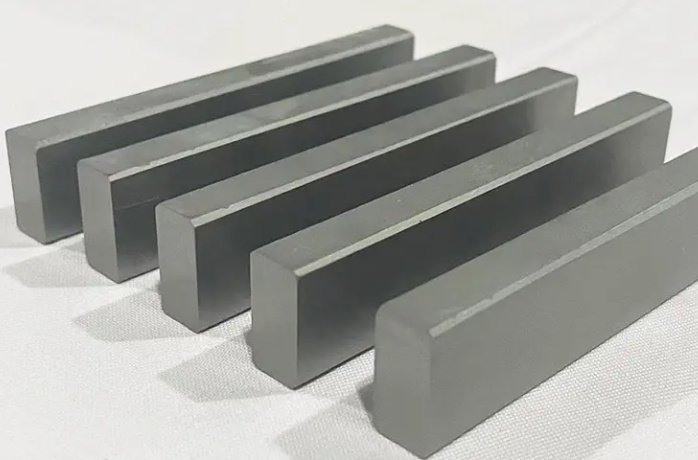

Composition, propriétés et caractéristiques
La composition des bandes de carbure rectifiées influe considérablement sur leurs performances. Le tableau suivant présente la composition et les caractéristiques typiques :
| Composant | Pourcentage | Caractéristique |
|---|---|---|
| Carbure de tungstène | 70-97% | Dureté et résistance à l'usure extrêmes. |
| Cobalt | 3-30% | Agit comme un liant, améliorant la ténacité et la résistance aux chocs. |
| Nickel | Jusqu'à 20% | Augmente la résistance à la corrosion et la ténacité. |
| Carbure de titane | Jusqu'à 10% | Améliore la stabilité à haute température et la résistance à l'usure. |
| Carbure de vanadium | Jusqu'à 2% | Améliore le contrôle de la croissance des grains et la résistance à l'abrasion. |
| Carbure de tantale | Jusqu'à 3% | Augmente la dureté et la résistance à l'oxydation à haute température. |
| Carbure de chrome | Jusqu'à 5% | Ajoute de la résistance à la corrosion et de la dureté. |
| Autres éléments | Variable | Peut être ajouté pour adapter les propriétés à des applications spécifiques. |
Dureté, solidité et résistance à l'usure
La dureté, la solidité et la résistance à l'usure des rectification de finition des bandes de carbure sont des paramètres clés qui influencent leurs performances. Voici une comparaison détaillée :
| Paramètres | Plage de valeurs | Description |
|---|---|---|
| Dureté (Vickers) | 1300-2000 HV | Indique la résistance du matériau à l'indentation. |
| Résistance à la compression | 4000-7000 MPa | Mesure la capacité à supporter des charges de compression. |
| Résistance à l'usure | Haut | Définit la capacité du matériau à résister à l'usure de surface et à l'abrasion. |
| Résistance à la rupture | 10-15 MPa-m^1/2 | Indique la résistance du matériau à la propagation des fissures. |
| Module de Young | 500-700 GPa | Reflète la rigidité du matériau. |
| Conductivité thermique | 50-100 W/m-K | Capacité à conduire la chaleur, importante pour dissiper les charges thermiques. |
| Coefficient de dilatation thermique | 4-7 µm/m-K | La vitesse à laquelle le matériau se dilate en fonction des changements de température. |
| Densité | 14,5-15,5 g/cm^3 | La masse par unité de volume, qui influe sur le poids et la stabilité. |
Spécifications, tailles, formes et normes
Les bandes de carbure rectifiées sont disponibles en différentes spécifications, tailles, formes et normes pour répondre aux besoins d'applications diverses. En voici un aperçu complet :
| Spécifications | Détails |
|---|---|
| Tailles | Longueur : 50-200 mm, largeur : 10-50 mm, épaisseur : 2-10 mm |
| Formes | Rectangulaire, carré, personnalisé |
| Normes | ISO, ASTM, DIN, JIS, sur mesure |
| Tolérances | Tolérances serrées disponibles pour les applications de précision |
| Finition de la surface | Polie, rectifiée, revêtue |
| Configurations des bords | Tranchant, biseauté, arrondi |
| Caractéristiques spéciales | Revêtements résistants à la corrosion, Capacités à haute température, Couches renforcées |
Fournisseurs et détails des prix
Le choix du bon fournisseur est essentiel pour obtenir des bandes de carbure rectifiées de haute qualité à des prix compétitifs. Voici un tableau détaillé des fournisseurs et des prix :
| Fournisseur | Localisation | Gamme de produits | Prix (par kg) | Offres spéciales |
|---|---|---|---|---|
| Kennametal | ÉTATS-UNIS | Carbure massif, à liant cobalt, à liant nickel | $50-$100 | Remises en gros, commandes personnalisées |
| Sandvik | Suède | Multicouches, micro-grains, enrobés | $60-$110 | Livraison gratuite pour les commandes importantes |
| Ceratizit | Luxembourg | Carbure massif, renforcé, personnalisé | $55-$105 | Remises sur volume, solutions personnalisées |
| Sumitomo Electric | Japon | Carbure massif, Carbure de titane, Micro-grain | $65-$115 | Assistance technique, services OEM |
| Carbure cémenté de Zhuzhou | Chine | Liés au cobalt, liés au nickel, personnalisés | $45-$95 | Prix compétitifs, conceptions personnalisées |
| Matériaux Mitsubishi | Japon | Multicouche, revêtu, renforcé | $70-$120 | Offres exclusives, Fabrication sur mesure |
| H.C. Starck | Allemagne | Carbure massif, micro-grain, revêtu | $55-$100 | Assistance technique, commandes personnalisées |
| Hyperion Materials & Technologies | ÉTATS-UNIS | Carbure massif, multicouche, carbure de titane | $60-$110 | Promotions spéciales, Solutions personnalisées |
| Groupe IMC | Israël | Liés au cobalt, liés au nickel, personnalisés | $50-$105 | Remises sur les achats en gros, commandes personnalisées |
| Outils Seco | Suède | Carbure massif, renforcé, personnalisé | $65-$115 | Assistance technique gratuite, conceptions personnalisées |
Choisir le bon Bandes de carbure rectifiées Fabricants
Pour choisir le bon fabricant, il faut tenir compte de divers facteurs tels que la qualité du produit, le prix, l'assistance technique et les options de personnalisation. Voici un tableau détaillé pour vous aider à sélectionner le bon fabricant de bandes de carbure rectifiées :
| Facteur | Considération |
|---|---|
| Qualité des produits | Recherchez des fabricants réputés pour leurs produits de haute qualité et leur contrôle strict de la qualité. |
| Tarification | Comparez les prix de plusieurs fournisseurs pour trouver des tarifs compétitifs sans compromettre la qualité. |
| Support technique | Assurez-vous que le fabricant offre une assistance technique et un service après-vente solides. |
| Options de personnalisation | Choisissez des fabricants qui offrent des possibilités de personnalisation pour répondre aux exigences d'une application spécifique. |
| Lead Times | Tenez compte des délais de production et de livraison pour garantir un approvisionnement en temps voulu. |
| Certifications | Vérifier que le fabricant possède les certifications nécessaires (ISO, ASTM, etc.). |
| Avis des clients | Vérifiez les avis et les témoignages des clients pour évaluer leur satisfaction et leur fiabilité. |
| Expérience | Optez pour des fabricants disposant d'une grande expérience et d'une grande expertise dans la production de bandes de carbure. |
| L'innovation | Recherchez des fabricants qui investissent dans la R&D et proposent des solutions innovantes. |
Avantages et limites des bandes de carbure rectifiées par finition
Les bandes de carbure rectifiées présentent de nombreux avantages, mais aussi certaines limites. Voici une comparaison :
| Aspect | Avantages | Limites |
|---|---|---|
| Dureté | Extrêmement dur, il offre une résistance à l'usure et une longévité supérieures. | Une dureté élevée peut les rendre cassants et susceptibles de se fissurer en cas d'impact important. |
| Solidité | Bonne ténacité, en particulier avec des liants à base de cobalt ou de nickel. | Il n'atteint peut-être pas la résistance d'autres matériaux comme l'acier. |
| Résistance à l'usure | Excellente résistance à l'usure, adaptée aux environnements abrasifs. | Nécessite un entretien approprié pour conserver la résistance à l'usure au fil du temps. |
| Résistance à la corrosion | Résistance élevée à la corrosion, en particulier avec les compositions de carbure de nickel ou de chrome. | Peut être sensible à des environnements corrosifs spécifiques s'il n'est pas correctement sélectionné. |
| Stabilité thermique | Conserve ses propriétés à haute température, idéal pour les applications à haute température. | La conductivité thermique peut être inférieure à celle des métaux, ce qui affecte la dissipation de la chaleur. |
| Personnalisation | Peut être adapté à des applications spécifiques grâce à des compositions et des formes variées. | La personnalisation peut augmenter les coûts et les délais. |
| Coût | Rentabilité à long terme grâce à la durabilité et à la faible fréquence de remplacement. | Coût initial plus élevé que celui de certains autres matériaux. |
| Précision | Offre une grande précision dans les applications de coupe et d'usinage. | La précision peut être affectée si elle n'est pas fabriquée avec des tolérances serrées. |

FAQ
Voici quelques questions fréquemment posées sur les bandes de carbure rectifiées :
| Question | Réponse |
|---|---|
| Qu'est-ce qu'une bande de carbure rectifiée ? | Il s'agit de bandes en carbure de tungstène, utilisées pour la coupe, l'usinage et les applications abrasives. |
| Pourquoi les appelle-t-on "finish grind" ? | Le terme "meulage de finition" désigne le processus de meulage final qui garantit des dimensions précises et une surface lisse. |
| Quelles sont les industries qui utilisent ces bandes ? | Les secteurs de l'automobile, de l'aérospatiale, de l'industrie manufacturière, du travail du bois, de l'exploitation minière et du secteur médical, entre autres. |
| Comment choisir la bonne bande ? | Tenez compte de facteurs tels que la dureté, la ténacité, la résistance à l'usure et les besoins spécifiques de l'application. |
| Peuvent-ils être personnalisés ? | Oui, de nombreux fabricants proposent des options de personnalisation pour répondre à des besoins spécifiques. |
| Quels sont les avantages de l'utilisation des bandes de carbure ? | Ils offrent une dureté, une résistance à l'usure et une longévité supérieures à celles des autres matériaux. |
| Sont-ils chers ? | Si le coût initial peut être plus élevé, leur durabilité les rend rentables à long terme. |
| Comment sont-ils fabriqués ? | En général, ils sont produits par des techniques de métallurgie des poudres, suivies de processus de broyage et de finition. |
| Quel entretien nécessitent-ils ? | Une inspection régulière et une utilisation appropriée peuvent prolonger leur durée de vie, mais un entretien minimal est généralement nécessaire. |
| Où puis-je les acheter ? | De nombreux fournisseurs dans le monde entier, dont Kennametal, Sandvik et Ceratizit, entre autres. |
Conclusion
Bandes de carbure rectifiées sont indispensables dans de nombreuses applications industrielles en raison de leur dureté, de leur résistance à l'usure et de leur durabilité inégalées. Que vous travailliez dans l'industrie automobile, aérospatiale ou manufacturière, il est essentiel de comprendre les différents types, propriétés et applications de ces bandes pour prendre des décisions éclairées. En tenant compte de facteurs tels que la qualité du produit, les options de personnalisation et la réputation du fournisseur, vous pouvez sélectionner le fabricant qui répondra à vos besoins spécifiques.
Ce guide complet a pour but de vous fournir toutes les informations dont vous avez besoin pour naviguer dans le monde des bandes de carbure de finition. Des types et applications aux propriétés des matériaux en passant par les coordonnées des fournisseurs, nous avons tout prévu pour vous aider à faire le meilleur choix en fonction de vos besoins industriels.



